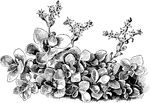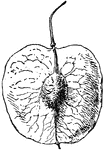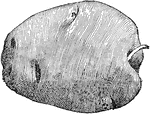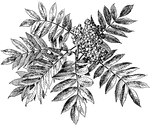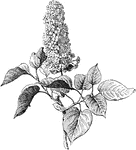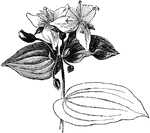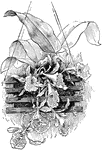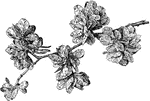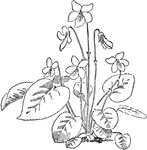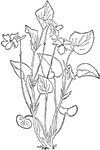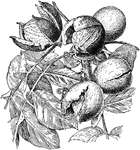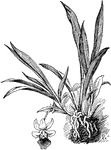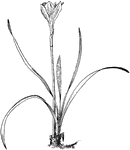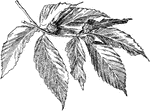
Smilacina Racemosa
This flowering plant belongs to the ruscaceae, which are common in North America.

Staphylea Trifolia
This plant is native to several parts of North America, including areas in south Florida.
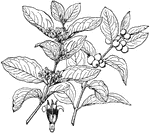
Symphoricarpos Occidentalis
This flowering plant belongs to the honeysuckle family, commonly seen in the North Americas.
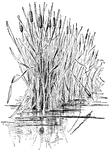
Typha Latifolia
Marsh plant featuring long flat leaves, commonly seen throughout North America, Europe and North Africa.
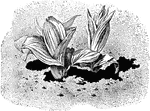
Veratrum Viride
Plant native to North America, featuring yellow leaves commonly used for medicinal purposes.

Juglans Cinerea
A tree native to North America featuring light wood and edible nut. The Cinerea are used to make brown…
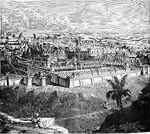
View of Jerusalem
"Finally should be mentioned Jerusalem, capital of Palestine. It is situated fifteen miles west of the…

Bald Cypress in Cultivated Form
An image of a bald cypress, in pyramidal cultivated form. It is otherwise known as taxodium distichum,…
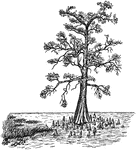
Bald Cypress in Swamp Form
An image of a bald cypress in swamp form, with aerating roots, or knees. It is otherwise known as taxodium…

Poison Oak
Also known as rhus diversiloba. It is a poisonous shrub located on the Pacific coast of North America…

American Water Hemlock
Also know as cicuta maculata. This plant is native to temperate areas of the Northern Hemisphere, and…

The Common Blue Jay
Also known as Cyanocitta cristata. These birds have a loud, harsh voice and striking colors. They occasionally…
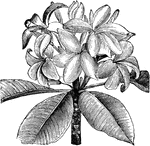
Frangipangi
Also known as Plumeria. It is native of tropical America, and is made up of thickish branches and white,…
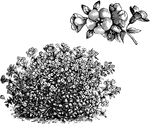
Polemonium Reptans
A flower that is native to eastern North American. It is either blue or white with leafy stems.

Lilium Philadelphicum
North American lily plant bearing orange, purple, and red flowers, and can grow up to 90 centimeters.
Pteris Denticulata
A slightly-toothed fern with fronds ranging between 1 foot and 2 feet in length. It is a long and slender…

Pteris Grandifolia
A large-fronded fern with straw-colored leaves. It is commonly found in tropical America.
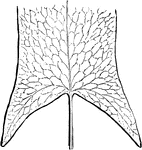
Pteris Sagittifolia
An arrow-fronded fern with blackish, long leaves. They are common between Venezuela and Brazil.

Large White Cabbage Butterfly
Also known as Pieris brassicae. It is commonly found throughout Europe, Asia, and north Africa. The…
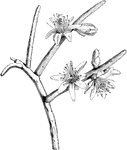
Rhipsalis Funalis
A plant which produces flowers with 7 to 8 white petals. The stamens are very numerous. They bloom between…
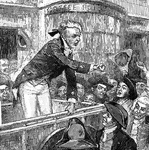
Carted Through the Streets
"The next day there was a lively time in Cambridge. All Middlesex was aflame, to say nothing of the…
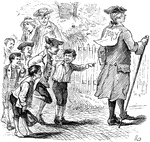
A Tory
Also referred to as loyalists. They were the American colonists who chose to remain loyal to Great Britain…

Burning of Charlestown
"This picture was drawn by a British engineer at the time of the battle. The view is from Copp's Hill,…

Bunker Hill After the Battle
"This picture was drawn by a British engineer a few days after the battle. The view is from the north…
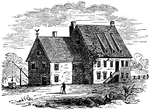
Jacobus Kip's House
"Mr. Jacobus Kip lived in an old-fashioned Dutch house, built of bricks make in Holland and brought…
View Looking North from Butt's Hill
"The view shows the intrenchments in the foreground. The Americans retreated past the houses in the…
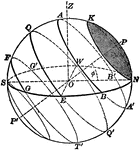
The Sphere of the Sky
"One standing at O will only see the half of the Sky which is above the circle NESW. The whole sky will…
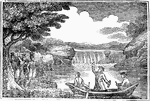
Roger Williams Crossing the Pawtucket River
Roger Williams was the founder of the Providence Plantation in Rhode Island, as well as the first Baptist…
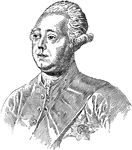
Lord North
Frederick North was the Prime Minister of Great Britain from 1770 to 1782. He led Great Britain through…
